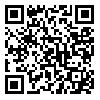BibTeX | RIS | EndNote | Medlars | ProCite | Reference Manager | RefWorks
Send citation to:
URL: http://sjsph.tums.ac.ir/article-1-5199-en.html

 , Seyed Jamaleddin Shahtaheri *
, Seyed Jamaleddin Shahtaheri * 
 2, Farideh Golbabaei3
2, Farideh Golbabaei3 
 , Abbas Rahimi foroushani4
, Abbas Rahimi foroushani4 
 , Mohammad reza Ganj Alizadeh5
, Mohammad reza Ganj Alizadeh5 
 , Farnoush Faridbod6
, Farnoush Faridbod6 

2- Ph.D. Professor, Department of Occupational Health Engineering, School of Public Health, Tehran University of Medical Sciences, Tehran, Iran ,
3- Ph.D. Professor, Department of Occupational Health Engineering, School of Public Health, Tehran University of Medical Sciences, Tehran, Iran
4- Ph.D. Associated professor, Department of Epidemiology and Biostatistics, School of Public Health, Tehran University of Medical Sciences; Tehran, Iran
5- Ph.D. Professor, Center of Excellence in Electrochemistry, University of Tehran, Tehran, Iran
6- Ph.D. Assistant Professor, Center of Excellence in Electrochemistry, University of Tehran, Tehran, Iran
Background and Aim: The aim of this study was to assess exposure of workers in a metal industry to nickel and lead.
Materials and Methods: Extraction was done using the solid-phase extraction on Chromosorb-102 resin to prepare, concentrate and purify biological samples of urine, hair and nails of workers working in metal industries. The variables influencing response (pH, loading flow rate, elution solvent, and amount of resins, elution volume, and sample volume) were examined and the procedure was optimized. The optimized procedure was, then, validated based on the “within-day” and “day-to-day” reproducibility experiments, using low, medium and high concentrations, leading to a satisfactory accuracy and precision. Finally, lead and nickel samples were taken from the workers and their concentrations determined voltammetrically.
Results: The optimum values for the examined parameters were as follows: pH = 9, ligand concentration = 0.05%, loading flow rate = 5 ml/min, elution solvent = 2M HNO3, amount of resins = 500 mg, elution volume = 15 ml, and sample volume up to 500 ml. A good reproducibility and repeatability was obtained for the optimized method under the existing conditions. Lead and nickel could be extracted with recoveries in the range of 94-100%. On the whole, the concentrations of nickel and lead in the workers’ biological samples were above the respective maximum permitted levels.
Conclusion: Solid-phase extraction procedure is a fast and simple method for preconcentrating and isolating analytes from biological samples. Considering the low concentrations of the analytes and presence of confounding factors in such samples, the procedure can be very effective for their preparation. The application of the developed method indicates that trace metal ions can be effectively purified and preconcentrated from different matrices like urine, hair and nail samples to assess occupational exposures.
Received: 2015/03/10 | Accepted: 2015/03/10 | Published: 2015/03/10
| Rights and permissions | |
 |
This work is licensed under a Creative Commons Attribution-NonCommercial 4.0 International License. |



